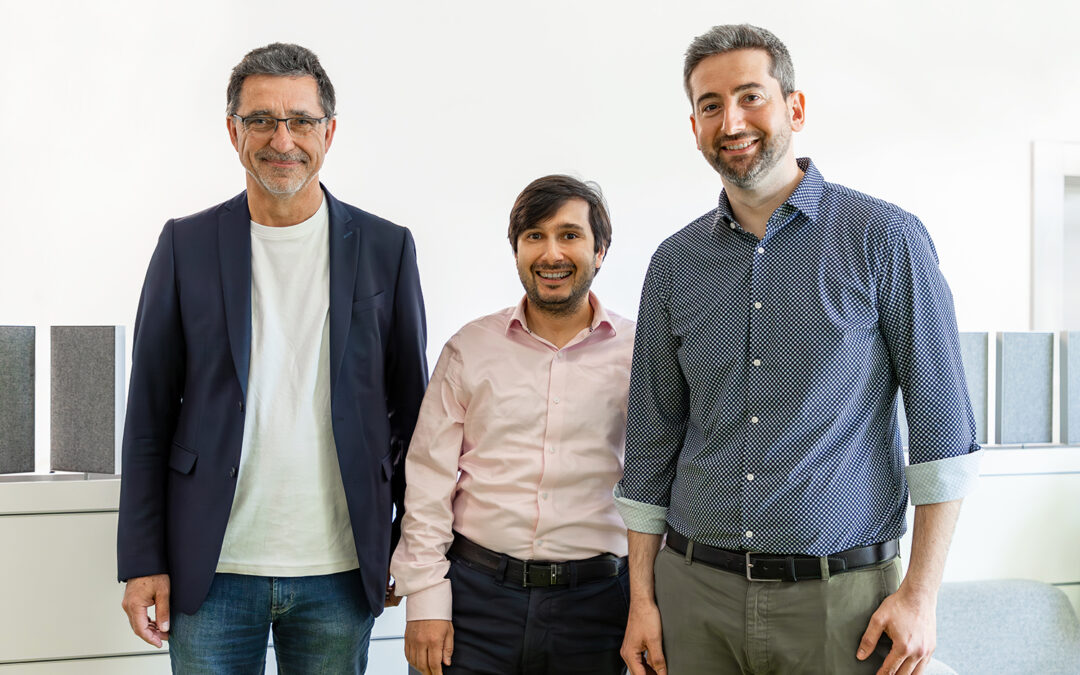The leading scientists at TU Braunschweig in the field of Microelectronics: Professor Andreas Waag, Professor Vadim Issakov and Professor Daniel Prades. Photo credit: Kristina Rottig/TU Braunschweig
Braunschweig and Hanover pool microelectronics expertise
The European Chip Act is designed to more than double semiconductor production in Europe, thereby addressing the fragmented chip supply chain. On the one hand, the high level of investment offers great opportunities for European semiconductor research and industry. On the other hand, the demand for skilled workers is growing rapidly. Technische Universität Braunschweig and Leibniz University Hannover are jointly positioning themselves for this future with the “Wissenschaftsraum Mikroelektronik“ (Microelectronics Science Area). Funded by the Volkswagen Foundation and the Lower Saxony Ministry of Science and Culture (MWK), the two universities are pooling their research and teaching activities, including a new degree programme.
Both Braunschweig and Hanover are recognised beacons of microelectronics research. The partners in the new science area are involved in three clusters of excellence (QuantumFrontiers, PhoenixD, Hearing4All) and in alliances such as Quantum Valley Lower Saxony (QVLS) and the Cluster4Future QVLS-iLabs. Despite the existing cooperation, the potential is far from exhausted – on the contrary: strong synergy effects are possible due to the complementary expertise of the institutions.
“Microelectronics makes our technologies ever more compact and intelligent. In Hanover, for example, it is biomedical implants (Prof. Holger Blume) or intelligent power management circuits (Prof. Bernhard Wicht); in Braunschweig, it is circuits for 6G communications, radar technology or integrated photonics (Prof. Stefanie Kroker). The fact that all this is based on chips means that we are not only broadly positioned together, but can also benefit greatly from each other’s expertise. The Science Area therefore also offers great opportunities to develop completely new collaborative projects,” says Professor Andreas Waag, spokesperson for the Science Area at TU Braunschweig.
International teaching in the Microelectronics degree programme
By 2022, there will be a shortage of 40,000 qualified specialists in the semiconductor industry’s key professions. In the same year, Intel announced the construction of a mega-factory in Magdeburg (Saxony-Anhalt), an hour’s drive from Braunschweig. The new site brings technologies to the region that were previously unavailable anywhere else in Europe. “The Intel site in particular has a high demand for academically trained specialists. So high, in fact, that no university can meet this demand on its own. With the establishment of the new English-language Master’s programme in Microelectonics, we are designing courses that will attract talent to the region in the long term and train them here,” says Professor Vadim Issakov from the Institute of CMOS Design at TU Braunschweig. “In Intel’s slipstream, the supply industry will establish itself in the region, which will further increase the demand for skilled workers.“
About the project
The “Microelectronics: Heterogeneous Chiplet-based Systems in Research and Teaching” is jointly led by Professor Holger Blume (Leibniz University Hannover) and Professor Andreas Waag (TU Braunschweig). After the start of the project in April 2024, the chairmanship will change from Hanover to Braunschweig at mid-term until the end of the project in March 2029. As part of the “zukunft.niedersachsen” programme, the Lower Saxony Ministry for Science and Culture (MWK) and the Volkswagen Foundation are funding the “Science Space Microelectronics” with around three million euros.
